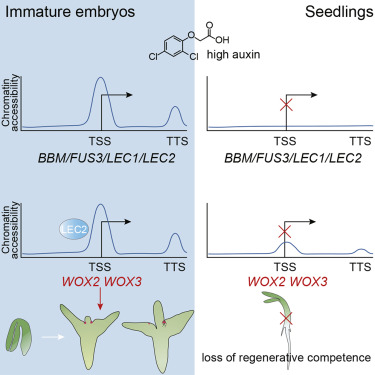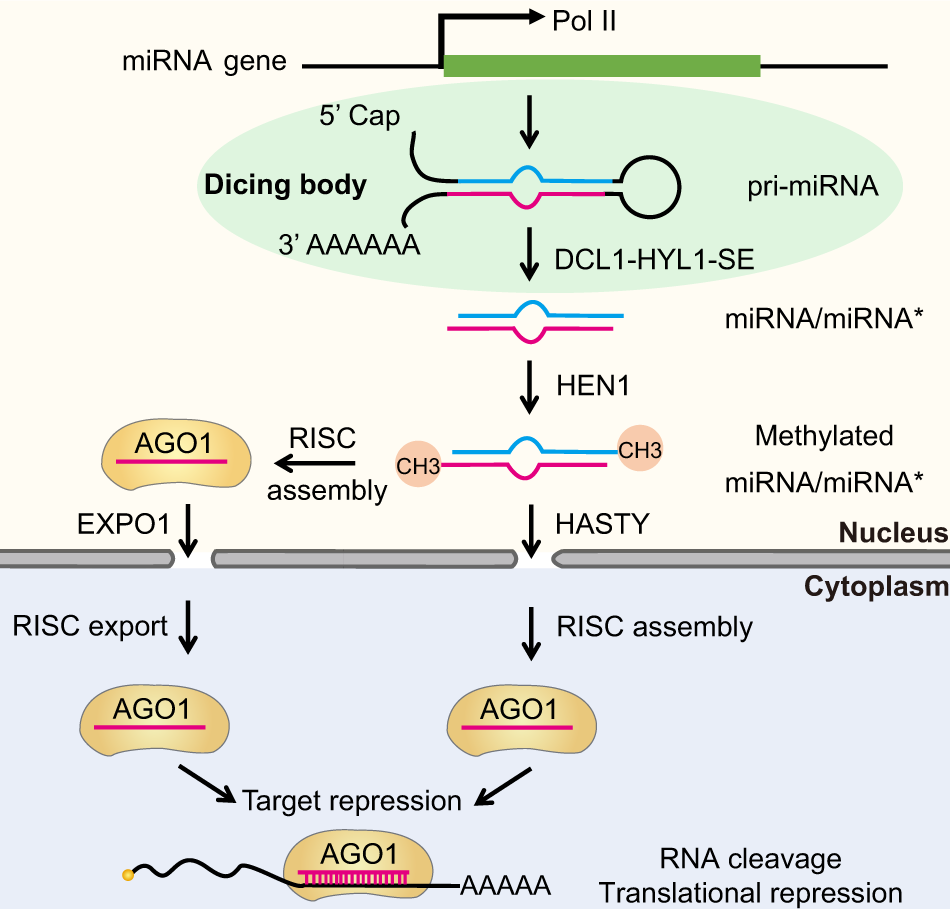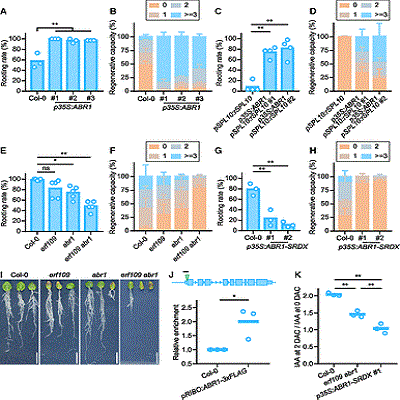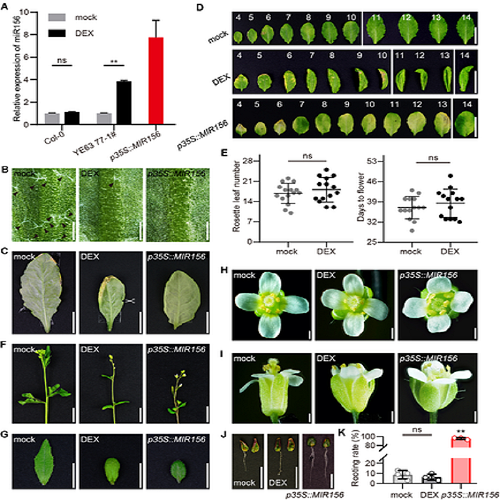Chromatin Accessibility Dynamics and a Hierarchical Transcriptional Regulatory Network Structure for Plant Somatic Embryogenesis
Full PDF link Summary Plant somatic embryogenesis refers to a phenomenon where embryos develop from somatic cells in the absence of fertilization. Previous studies have revealed that the phytohormone auxin plays a crucial role in somatic embryogenesis by inducing a cell totipotent state, although its underlying mechanism is poorly understood. Here, we show that auxin rapidly rewires the cell totipotency network by altering chromatin accessibility. The analysis of chromatin accessibility dynamics further reveals a hierarchical gene regulatory network underlying somatic embryogenesis.






